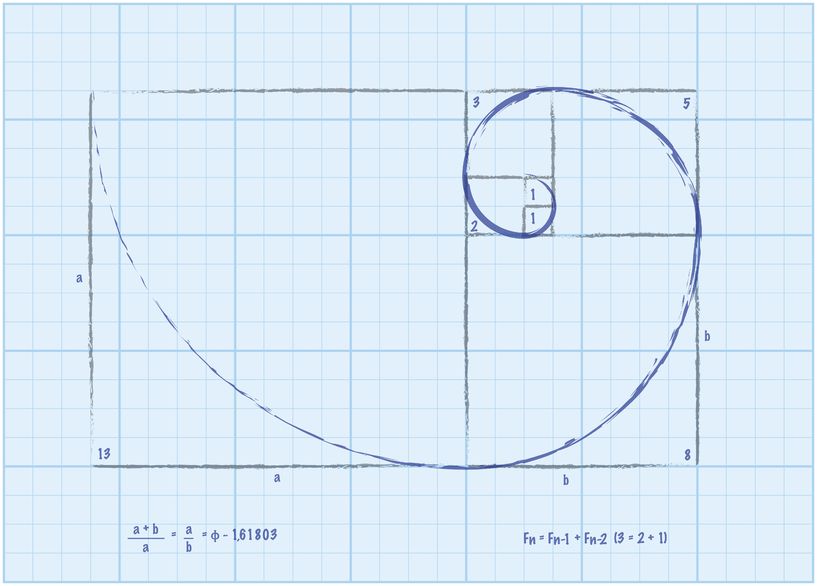Fibonacci Marketing
 In mathematics, the Fibonacci sequence includes the following integer sequence: 0, 1, 1, 2, 3, 5, 8, 13, 21, 34, 55, 89, 144, 233, 377…
In mathematics, the Fibonacci sequence includes the following integer sequence: 0, 1, 1, 2, 3, 5, 8, 13, 21, 34, 55, 89, 144, 233, 377…
Although this sequence was known to Indian mathematicians over 2000 years ago, the concept was introduced to the west by Fibonacci in his 1202 book entitled Liber Abaci.
Without going into all the complicated proofs, the Fibonacci sequences is the closest rational approximation to the irrational number of the golden ratio (1.61803…..). For a good intuitive feel for how this works, examine the picture of the golden mean spiral, a pattern replicated in nature again and again, including flower petals, pinecones, shells, hurricanes, and spiral galaxies to name few. The Fibonacci numbers have been utilized in many human disciplines, including art, architecture, and even computer science.
I worked with a client a few years ago and helped him develop a marketing plan based on the Fibonacci Numbers (I came up with the sequence timeline, his team created the marketing materials). This was an engagement campaign with some upsell or significant early bird savings for current customers and it began immediately after they purchase the primary service which was very seasonal. This particular business required repeat business to thrive; however, they had often lost contact with clients in the past during the off-season and thereby lost business. The Fibonacci Marketing Sequence was to insure their customers remembered them as well as to offer upgrades, additional services, and early bird specials, depending on the timing.
Sample Fibonacci Marketing Timeline:
Day 0: Initial Sale
Day 1: Thank You Phone Call (Upsell Offered)
Day 1: Thank You Card Mailed (With coupon for a related service)
Day 2: ‘5 Tips’ Post Card Mailed
Day 3: Referral Program Information Mailed
Day 5: Thank You Gift Mailed (which cost less than $2.00 but has significant value to the customers)
Day 8: ‘5 Additional Tips’ Post Card Mailed
Day 13: Service Call Checkup (seeing how the first service went)
Day 21: Sales Letter Offer for Additional Services Mailed
Day 34: Second Service Call Checkup
Day 55: Second Sales Letter Offer for End of Season Services Mailed
Day 89: Third Service Call Checkup
Day 144: Second Thank You (For Being a Customer) Card with Early Bird Pre-Order Offer
Day 233: Cool Tool Mailing (under $2.00, like a calculator) mailed along with Early Bird Offer
Day 365: One Year Anniversary Early Bird Offer Phone Call
Day 377: Early Bird Offer Post Card
End of Campaign.
Now, this sequences does differ a little from the standard Fibonacci sequence as the one year anniversary of being a customer was added.
Caveat: while I believe Fibonacci Marketing can be a good marketing strategy, this is very contextual and choosing this method should be handled with care. It appear to me that Fibonacci Marketing would definitely not be appropriate for many marketing situations. It seems best for things like seasonal offering or for events/seminars/classes which only happen once a year. I would highly recommend continual, consistent, and frequent marketing messages (such as daily emails, weekly specials, or monthly newsletters) is more effective for most offerings. Nevertheless, I believe this can be a cost effective strategy where lots of marketing needs to happen initially and then an elongated follow-up process is used to maintain a level of engagement with current customers.